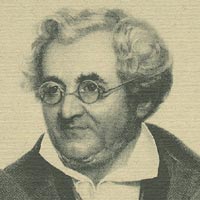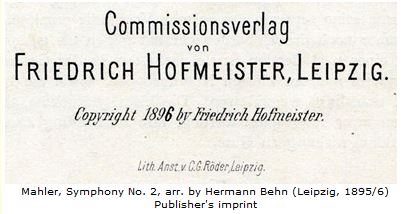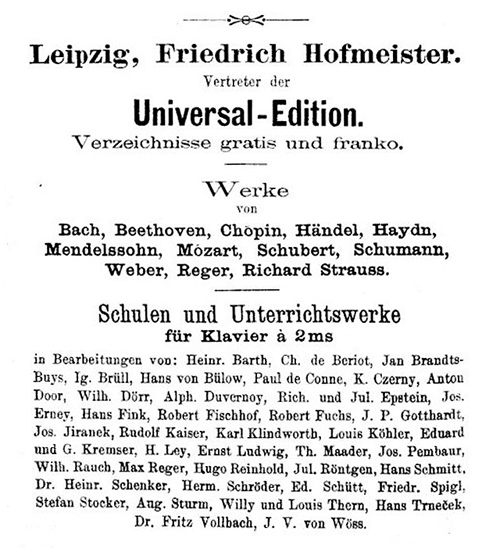
![Main heading: The Music of Gustav Mahler: A Catalogue of Manuscript and Printed Sources [rule] Paul Banks](../../images/General%20Heading3.jpg)
|
|
|||||||||||||||||||||||||||||||
|
|
|||||||||||||||||||||||||||||||
|
|
|||||||||||||||||||||||||||||||
|
|
|||||||||||||||||||||||||||||||
|
|
|||||||||||||||||||||||||||||||
|
|
|||||||||||||||||||||||||||||||
|
|
|||||||||||||||||||||||||||||||
|
|
|
||||||||||||||||||||||||||||||
|
|
|||||||||||||||||||||||||||||||
|
|
|||||||||||||||||||||||||||||||
|
|
|
||||||||||||||||||||||||||||||
|
|
|||||||||||||||||||||||||||||||
|
|
|||||||||||||||||||||||||||||||
|
|
|||||||||||||||||||||||||||||||
|
Index of Works |
|
||||||||||||||||||||||||||||||
|
Site Map |
|
||||||||||||||||||||||||||||||
|
|
|||||||||||||||||||||||||||||||
|
|
|
||||||||||||||||||||||||||||||
|
|
|||||||||||||||||||||||||||||||
|
|
|
||||||||||||||||||||||||||||||
|
|
|
||||||||||||||||||||||||||||||
|
|||||||||||||||||||||||||||||||
Friedrich Hofmeister (Leipzig)
The founder of the firm, Friedrich Hofmeister (1782–1864) was trained
in the firms of Breitkopf & Härtel and Bureau de musique (both Leipzig)
before establishing his own music selling business there in 1807; this
was expanded with
 the
addition of music publishing and music hire activities. In the years
that followed Hofmeister led his own business and also helped to lay the
foundations for both German music bibliography and the German copyright
legislation. His predecessors in the field of bibliography were
Anton Meysel who had issued a Handbuch der musikalischen Literatur
in 1817 (supplement in 1818) and Carl Friedrich Whistling (1788–after
1849) who had issued further supplements and then a 'Zweite, ganz
umgearbeitete, vermehrte und verbesserte Auflage' in 1828. Whistling
also began issuing the enormously useful Musikalisch-Literarischer
Monatsbericht in 1829, a monthly listing of new musical publications
which provides invaluable information about all aspects of the German
and (to a lesser extent) European music publishing. On 28 May
1830 Friedrich Hofmeister bought both Whistling's shop and his
bibliographical series, and the company continued both throughout the
nineteenth century, adding the Jahresverzeichnis der deutschen
Musikalien und Musikschriften in 1852. The Monatsbericht is
a useful, though far from infallible, guide to the dating of printed
editions, and the dates of entries for publications of Mahler's music
are included in the relevant bibliographic descriptions in this
catalogue.
the
addition of music publishing and music hire activities. In the years
that followed Hofmeister led his own business and also helped to lay the
foundations for both German music bibliography and the German copyright
legislation. His predecessors in the field of bibliography were
Anton Meysel who had issued a Handbuch der musikalischen Literatur
in 1817 (supplement in 1818) and Carl Friedrich Whistling (1788–after
1849) who had issued further supplements and then a 'Zweite, ganz
umgearbeitete, vermehrte und verbesserte Auflage' in 1828. Whistling
also began issuing the enormously useful Musikalisch-Literarischer
Monatsbericht in 1829, a monthly listing of new musical publications
which provides invaluable information about all aspects of the German
and (to a lesser extent) European music publishing. On 28 May
1830 Friedrich Hofmeister bought both Whistling's shop and his
bibliographical series, and the company continued both throughout the
nineteenth century, adding the Jahresverzeichnis der deutschen
Musikalien und Musikschriften in 1852. The Monatsbericht is
a useful, though far from infallible, guide to the dating of printed
editions, and the dates of entries for publications of Mahler's music
are included in the relevant bibliographic descriptions in this
catalogue.
Intertwined with this bibliographic activity was Hofmeister's leading role in forming a representative body within the German music trade, which emerged first as the Verein der Musikverleger gegen musikalischen Nachdruck (1829), and was later renamed the Verein der deutschen Musikalienhändler. This association played an increasingly powerful role in the development of musical copyright within the German states. Initially it was simply a private body, which Hofmeister supported by maintaining within his own firm a Bureau d'Enregistrement in which members could register their publications as a means of asserting their interests in a work, but in 1837 the Prussian state finally established a thirty-year copyright period for composers.
Hofmeister was an energetic publisher in his own right, and numbered
Schumann, Mendelssohn, Chopin and Berlioz among the composers in his
catalogue. After 1852 the business was managed by his sons, Adolph Moritz
(1802–70) and Wilhelm Hofmeister (1824–77) and from 1877–1905 by a
partner, Albert Röthing, who was in charge when in 1895 the firm was
became invol ved in plans to publish Mahler's Second Symphony. The
financially independent lawyer and musician Hermann Behn (1859–1927) had
been so impressed by the partial première
of the work on
4 March 1895, that he decided to arrange the work for two
pianos – his similarly scored arrangement of Bruckner's Seventh Symphony
had won the composer's plaudits – and to subsidise the publication of
both the
arrangement and a voice and piano version of the fourth movement,
Urlicht. By the autumn of the year both were at proof stage and were listed in the December issue
of the
Monatsbericht (though the copyright date
on the title page of the two-piano
arrangement has been rather crudely altered to 1896). Behn later joined with the
businessman Wilhelm Berkhan (about whom Mahler scholarship is currently
more or less silent, but see
GMLJ/GMLJE
passim) to pay for the first complete performance of the
Symphony on
13 December 1895 – a cost of about 5000 marks (GMUB,
18;
GMUBE, 20) – and for the publication of the
full score.
The latter was engraved and printed by the pre-eminent firm of C.G. Röder,
and work began in 1896: it was eventually published in February
1897. This was the first orchestral score of an original work by Mahler
to appear in print.
ved in plans to publish Mahler's Second Symphony. The
financially independent lawyer and musician Hermann Behn (1859–1927) had
been so impressed by the partial première
of the work on
4 March 1895, that he decided to arrange the work for two
pianos – his similarly scored arrangement of Bruckner's Seventh Symphony
had won the composer's plaudits – and to subsidise the publication of
both the
arrangement and a voice and piano version of the fourth movement,
Urlicht. By the autumn of the year both were at proof stage and were listed in the December issue
of the
Monatsbericht (though the copyright date
on the title page of the two-piano
arrangement has been rather crudely altered to 1896). Behn later joined with the
businessman Wilhelm Berkhan (about whom Mahler scholarship is currently
more or less silent, but see
GMLJ/GMLJE
passim) to pay for the first complete performance of the
Symphony on
13 December 1895 – a cost of about 5000 marks (GMUB,
18;
GMUBE, 20) – and for the publication of the
full score.
The latter was engraved and printed by the pre-eminent firm of C.G. Röder,
and work began in 1896: it was eventually published in February
1897. This was the first orchestral score of an original work by Mahler
to appear in print.
No contract for these publications has come to light, and according to Franz Willnauer (GMBsV, 28), no documents relating to them survive in the Hofmeister archives, so the precise commercial and copyright arrangements such as the cost of production, the scale of the subsidy, the provision (if any) for the payment of royalties on sales and the size of the print run, remain unknown or uncertain. It would seem, though, that the subsidy may have covered the engraving costs, as Mahler asserted that the plates were his property (see below). The note at the head of p. 2 of the score offers some clues to another aspect of the contractual situation:
|
Die Erlaubniss zu öffentlichen Aufführungen wird nur durch Vermittlung des Verlages von der Componisten ertheilt, von welchem auch das Stimmenmaterial zu beziehen ist. Der Preis für öffentliche Aufführungen unterliegt besonderer Vereinbarung. |
Permission for public performances is obtainable from the composer – from whom the performing material is also available – only through the agency of the publisher. The fee for public performances is subject to special agreement. |
Hofmeister was providing the composer with administrative support, but Mahler was reserving performances rights to himself. One wonders how the performance fees were calculated, and whether Hofmeister took a percentage.

The few letters from Mahler to Behn that refer to the publication process seem to indicate that the composer, who was inevitably involved in the proof-reading process, may not have dealt directly with Hofmeister very much, but rather through Behn. On the other hand it was Mahler who in June 1896 got upset about some of the costs involved in the production of the score (GMUB, 27; GMUBE, 29 (revised below)):
|
Die Berechnungen des Correctors haben mir ordentlich lange Zähne gemacht, und ich muß wirklich mich halten, um nicht wieder Dummheit zu machen – und das wäre wirklich, wenn ich wieder in meine bereits sehr herabgekommene Tasche greifen wollte, um die C-moll autographieren zu lassen. |
The proof-reader's estimates have made me very angry, and I must really control myself not to do anything foolish again – which it would be if I dipped once more into my already very destitute pocket in order to have the C minor lithographed by transfer from writing.¹ |
What seems to be at issue here are the costs incurred because of revisions that Mahler was making at proof stage – a matter of some embarrassment since these costs no doubt had to be met by Behn and Berkhan. Mahler presumably felt that revising an autographiert score would be cheaper. He had some experience of the process as it was used to produce the first full score of his to be printed, the hire-only score of Die drei Pintos (1888).
Publication of the score of the Symphony was rather delayed, and it was only on 17 February 1897 that Mahler could announce that it was 'published at long last' in a letter to Max Marschalk (GMB, 209; GMSL, 211). Having finally produced the full score of the Symphony, Hofmeister's connection with the work quickly came to an end. Mahler took up his post as Kapellmeister at the Vienna Hofoper in April 1897 and later that year discussions were started about the possibility of a subsidy from the Gesellschaft zur Förderung deutschen Wissenshaft, Kunst und Literature in Böhmen to pay for the publication of the First and Third Symphonies by EWZG. From the outset the scheme was to also include a contribution to the cost of publishing the performance material for the Second, and the advantages of having all four published formats of the work handled by the same publisher and distributor would have been apparent. The date and particulars of the negotiations between EWZG and Hofmeister are unknown, but must have been started early, because on 13 January 1898 Mahler wrote to an unnamed recipient (probably Hermann Behn) in connection with the transfer of the plates (unpublished letter, sold at Sotheby's, in May 1989, lot 176):
|
...Wie verhalt sich mit den Platten der C-moll-Partitur? Ich war so keck, dieselben als meine Eigenthum zu bezeichnen. Eben werde ich von dem Verleger aufgefördert bei Röder die “Ausfolgung” der Platten zu veranlassen.... |
What's the situation with the plates of the score of the C minor? I was bold enough to designate them as my own property. I've just been asked by the publisher to arrange the delivery of the plates with Röder. |
Although Mahler refers here only to the score, just over a week later he enlarged his request, and asked Behn to have the plates for his two-piano arrangement sent as well:² both, along with Behn's arrangement of Urlicht, were subsequently reissued under the Weinberger imprint from the Hofmeister originals. Unsold copies of Urlicht were also transferred to EWZG and were made available with the imprint of Josef Weinberger (who published the work presumably under licence) pasted over the Hofmeister imprint (see PV1a). If the same was done with the remaining stock of the full score and the arrangement, such copies have not yet been located; dated handbills announcing the availability of scores and other material for the first two symphonies, make it clear that by November 1898 Weinberger had taken over responsibility for the distribution of the two works. The print run for the score may well have been relatively modest – for comparison one may note that twelve years later the commercial first edition of the full score of the Eighth Symphony consisted of only 40 copies – and the EWZG/Weinberger reprint was probably published in 1899. Nevertheless the original Hofmeister edition was still available some years later: when the British Library purchased a full score of the work in February 1905, it was a copy of the Hofmeister edition (with no Weinberger paste over) that was delivered.
In later years, Hofmeister, as the German agent for Universal-Edition, continued to play a major role in the dissemination of Mahler's music in central Europe. The firm of Friedrich Hofmeister survived the upheavals of the twentieth century and continues to develop: its catalogue once again includes works by Mahler, among them an arrangement of Urlicht for cello and piano, by David Geringas.

Fig. 1. Advert: Hofmeister Monatsbericht (January 1906), p. 46

![]() https://orcid.org/0000-0002-2258-0267
©
2007-21 Paul Banks | This page was lasted edited on
07 January 2021
https://orcid.org/0000-0002-2258-0267
©
2007-21 Paul Banks | This page was lasted edited on
07 January 2021